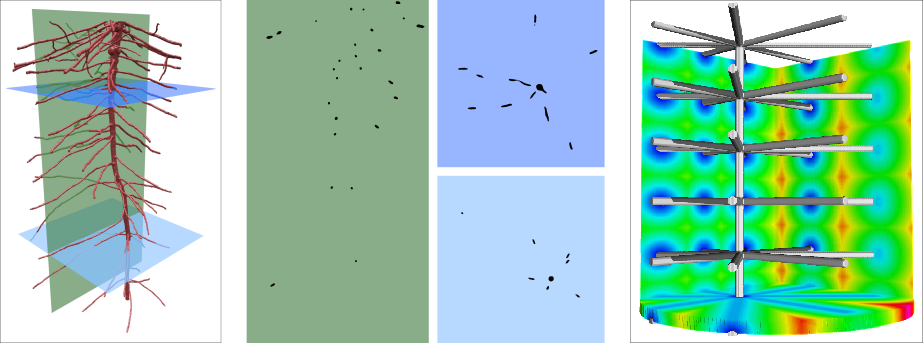P26 - Spatiotemporal root patterns
Statistical analysis and modeling of root measures for the description of spatiotemporal root patterns

The 3D microstructure of roots plays a key role for rhizosphere and root structure formation and function. X-ray computed tomography (CT) is a powerful technology to study spatiotemporal root growth patterns in 3D. However, simulated root architectures provide additional insights, e.g., through faster data acquisition and higher temporal resolution. Large amounts of complex image data are generated, which need to be statistically analyzed and concisely modeled.
In a recent publication, we proposed a root distance model, which is able to describe root growth patterns in the first weeks of growth of Vicia faba. In a further paper, we investigated the connection between the input parameters of the 3D root architecture model CRootBox and various measures of the simulated root systems.
In the present project, we will continue to statistically analyze (experimentally observed and simulated) root growth patterns from the soil perspective. In addition to analyzing entire root systems via root distance models, we develop local root distance models with respect to specific classes of root segments, e.g., segments which are older (proximal to the seed) or segments being at, or near, the tips of roots. This will give us more detailed insight into the dynamics of root growth and function. Furthermore, quantitative relationships will be established between the input parameters of the 3D root architecture model CRootBox and various root measures. The results will be used to develop a universally applicable approach for the target-oriented calibration of root architecture models. An additional topic is the statistical description of geometrical root patterns to distinguish between purely random, even and clustering morphologies. Methods of stochastic geometry provide yet another perspective in the analysis of growing root systems and will be used to study, e.g., the correlation of root piercing point patterns in planar (e.g. vertical or horizontal) sections of soil with chemical 2D maps.
Link to English scientific abstract
Link to German scientific abstract
